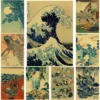This Content Is Only For Subscribers
When you hear the bright, cheerful strumming of a ukulele, you’re experiencing the legacy of a remarkable cultural journey that spans oceans and centuries. The history of the ukulele tells a story of immigration, royal patronage, pop culture crazes, and digital revival. Updated for 2025, this exploration traces how a humble Portuguese stringed instrument evolved into a global music phenomenon.
Portuguese Beginnings in 1879: Machete & Rajão Land in Hawaii
The ukulele’s story begins with three cabinetmakers from Madeira. In August 1879, Manuel Nunes, José do Espírito Santo, and Augusto Dias arrived in Honolulu harbor aboard a ship carrying Portuguese immigrants to Hawaii. These skilled craftsmen brought with them the machete (also called braguinha) and the slightly larger five-string rajão – small guitar-like instruments from their homeland.

Manuel Nunes, José do Espírito Santo & Augusto Dias: The First Luthiers
By 1884, these three men established instrument shops in Honolulu and began crafting what would become the first ukuleles. They used native Hawaiian koa wood, creating instruments that maintained the figure-eight shape of the machete but adopted the tuning of the rajão’s top four strings – eventually evolving into the standard G-C-E-A tuning we know today.
Why Hawaiians Called It the “Jumping Flea”
Local Hawaiians watched in fascination as the Portuguese immigrants played their instruments with quick, nimble finger movements. This rapid finger work inspired the name “ukulele,” which translates to “jumping flea” in Hawaiian, perfectly capturing the visual of fingers dancing across the strings.
Royal Endorsement: King Kalākaua & Queen Lili’uokalani Embrace the Ukulele
The ukulele might have remained a niche immigrant instrument without the enthusiastic support of Hawaiian royalty. King David Kalākaua, a passionate patron of the arts, incorporated the ukulele into royal gatherings and traditional hula performances in the 1880s. His sister, Queen Lili’uokalani – herself a talented composer who wrote “Aloha ‘Oe” – further elevated the instrument’s status.

The royal endorsement embedded the ukulele deeply into Hawaiian musical identity. Musicians throughout the islands adopted the instrument, developing distinctive playing styles that blended Portuguese techniques with Hawaiian musical traditions. Demand grew so quickly that the original Portuguese craftsmen and their apprentices struggled to keep up.
Mainland Explosion: The 1915 San Francisco World’s Fair and Tin Pan Alley Craze
The ukulele might have remained a Hawaiian treasure if not for the 1915 Panama-Pacific International Exposition in San Francisco. At this world’s fair, the Hawaiian Pavilion featured ukulele performers (including maker Jonah Kumalae) who captivated mainland audiences. Their performances ignited what would become known as the “ukulele craze” across America.

By 1916, New York’s Tin Pan Alley publishers pumped out Hawaiian-themed songs to capitalize on the trend. Mainland manufacturers like Martin, Harmony, and Regal began mass-producing ukuleles to meet exploding demand.
Cliff “Ukulele Ike” Edwards, Roy Smeck & Vaudeville Fame
Vaudeville performers quickly adopted the charming instrument. Cliff “Ukulele Ike” Edwards (later the voice of Jiminy Cricket) and virtuoso Roy Smeck brought ukulele music to theaters and early sound films. The instrument’s portability, affordability, and relatively easy learning curve made it perfect for the carefree Jazz Age. College students strummed at beach parties, sheet music routinely included ukulele chord diagrams, and the instrument firmly entered American pop culture.

Mid-Century Pop Culture: Plastic Ukuleles, Arthur Godfrey & Tiny Tim
The ukulele maintained its popularity through the mid-20th century, evolving to match changing times. In the late 1940s, Mario Maccaferri revolutionized the market by manufacturing millions of inexpensive plastic ukuleles (branded as “Islander”). These colorful instruments introduced countless children to music-making and further cemented the ukulele’s reputation as a fun, accessible instrument.
Television personality Arthur Godfrey boosted the instrument’s profile in the 1950s by teaching ukulele basics on his popular TV show, inspiring a new generation of players. By the 1960s, Hollywood embraced the ukulele’s tropical associations – Elvis Presley strummed one in “Blue Hawaii” (1961), reinforcing its connection to Hawaiian culture.
The quirky performer Tiny Tim brought the ukulele to mainstream attention again in 1968 with his surprise hit “Tiptoe Through the Tulips.” Around the same time, Beatles guitarist George Harrison developed a deep love for the ukulele, often traveling with multiple instruments and gifting them to friends. The little instrument had captured hearts from Honolulu to Hollywood to Liverpool.
The Modern Revival (1990s–Today): Iz, Jake Shimabukuro & YouTube
After fading somewhat in the 1970s and 1980s, the ukulele experienced a dramatic renaissance starting in the 1990s. Hawaiian musician Israel “Iz” Kamakawiwo’ole released his gentle ukulele-backed medley of “Over the Rainbow/What a Wonderful World” in 1993. The recording gained worldwide fame through film and commercial placements, introducing millions to the sweet sound of the ukulele.
Musician and publisher Jim Beloff simultaneously began promoting the instrument through modern songbooks and festival appearances. The seeds of revival were planted.
The internet age supercharged the ukulele’s comeback. In 2006, Jake Shimabukuro’s virtuosic ukulele cover of “While My Guitar Gently Weeps” became one of YouTube’s first viral music videos, demonstrating the instrument’s surprising range and capability. The accessibility of online tutorials and performances created a vibrant global community of players. Today, chart-topping artists like Billie Eilish, Twenty One Pilots, and Vance Joy regularly feature ukuleles in hit songs.
Four Ukulele Types and Their Tunings
The modern ukulele family includes four main sizes, each with distinct tonal qualities:
- Soprano (traditional): The smallest and most traditional size, typically tuned G-C-E-A
- Concert: Slightly larger with more frets and fuller sound
- Tenor: Larger still, often preferred by professional performers
- Baritone: The largest standard size, usually tuned differently (D-G-B-E)
Most beginners start with soprano or concert models, which balance affordability with playability.
Why the Ukulele Keeps Booming: Accessibility, Affordability, Community
The ukulele’s enduring popularity stems from several factors. First, its approachable learning curve allows new players to form basic chords quickly. Second, quality starter instruments remain relatively affordable compared to many other instruments. Third, the ukulele has become a cornerstone of music education – many schools now use ukuleles to teach basic music skills, following the pioneering work of Canadian educator J. Chalmers Doane in the 1960s.
Finally, the ukulele’s association with Hawaiian “aloha spirit” creates a welcoming community atmosphere around the instrument. From informal jam sessions to international festivals, ukulele players connect through a shared love of this humble four-stringed wonder.
FAQ: Common Questions About Ukulele History
When and where was the ukulele invented? The ukulele emerged in 1880s Honolulu, created by Madeiran immigrants who adapted their native stringed instruments.
Why is it called a “ukulele”? Hawaiians named it “ukulele” meaning “jumping flea,” inspired by how players’ fingers jumped quickly across the strings.
What sparked the 1920s ukulele craze? Hawaiian musicians at the 1915 San Francisco World’s Fair captivated mainland audiences, while Tin Pan Alley publishers flooded the market with Hawaiian-themed songs.
Who revived the ukulele in the 1990s? Israel “Iz” Kamakawiwo’ole’s “Over the Rainbow” recording and Jim Beloff’s modern songbooks helped spark renewed interest.
From Portuguese machetes to YouTube sensations, the ukulele’s journey represents a beautiful example of cultural exchange and evolution. More than just an instrument, it has become a global symbol of musical accessibility and joy – proving that sometimes the smallest instruments make the biggest impact.





